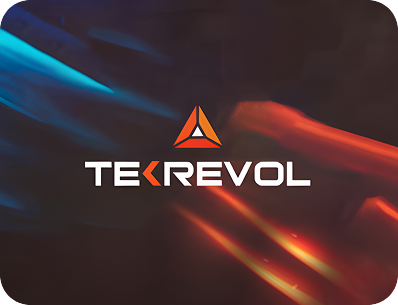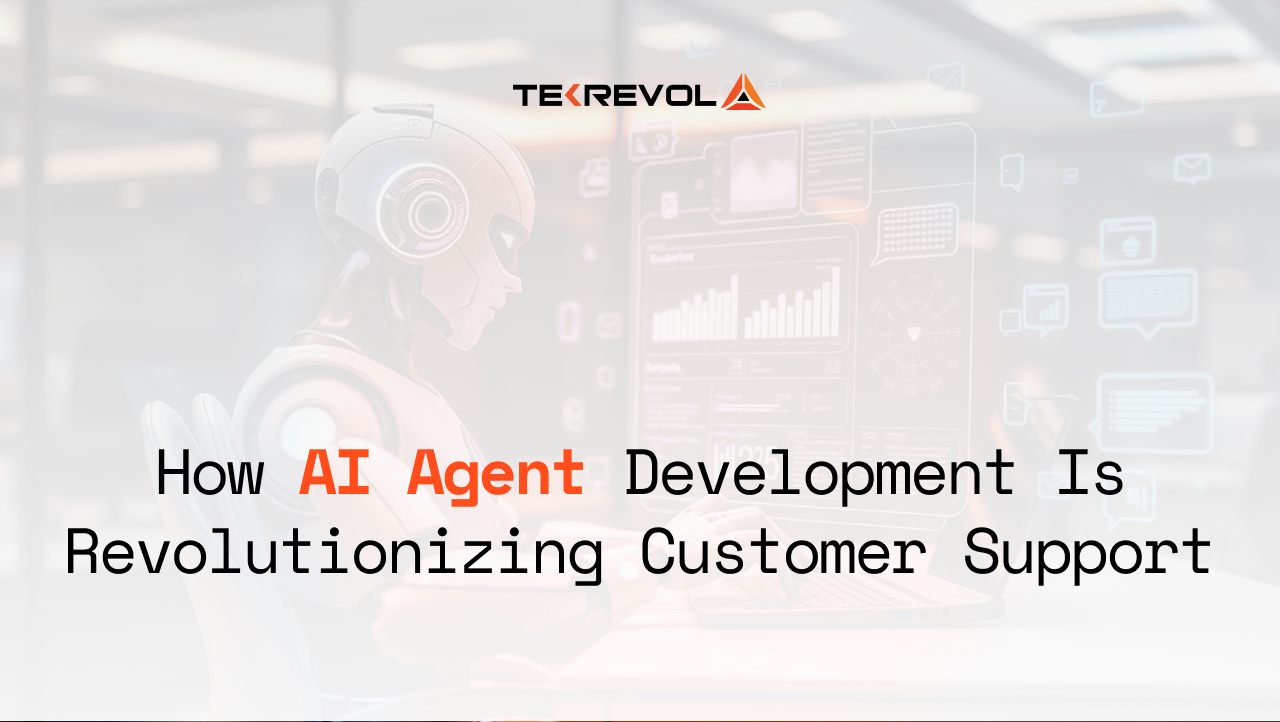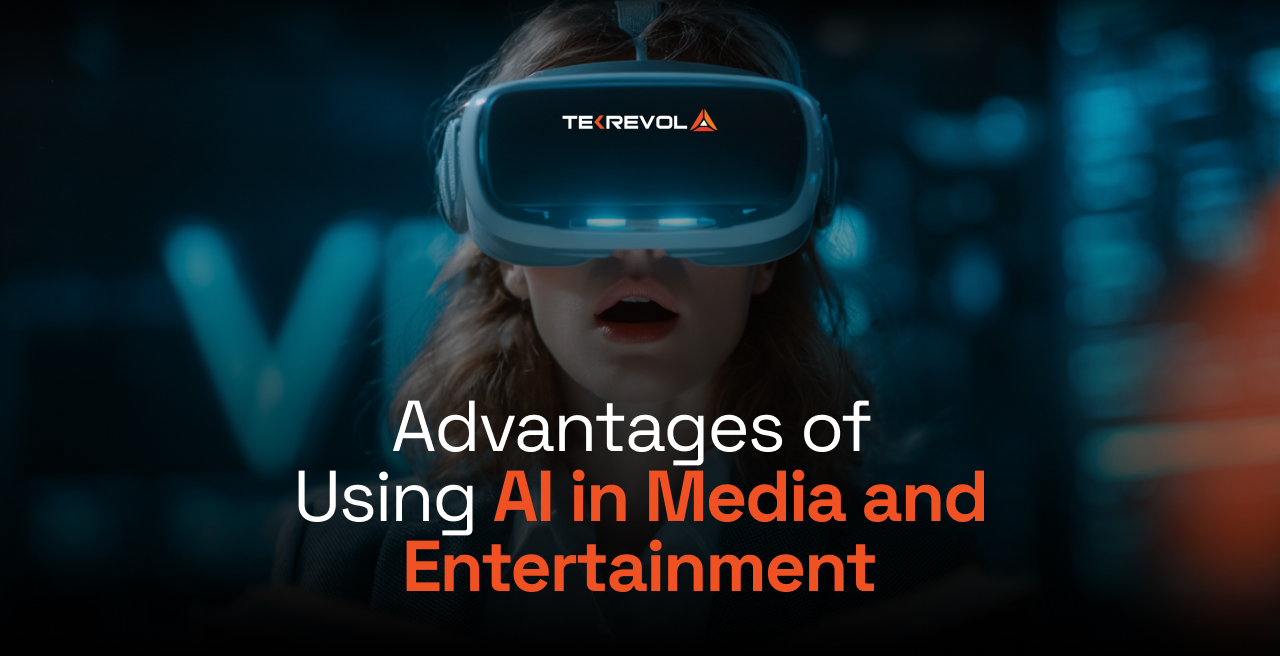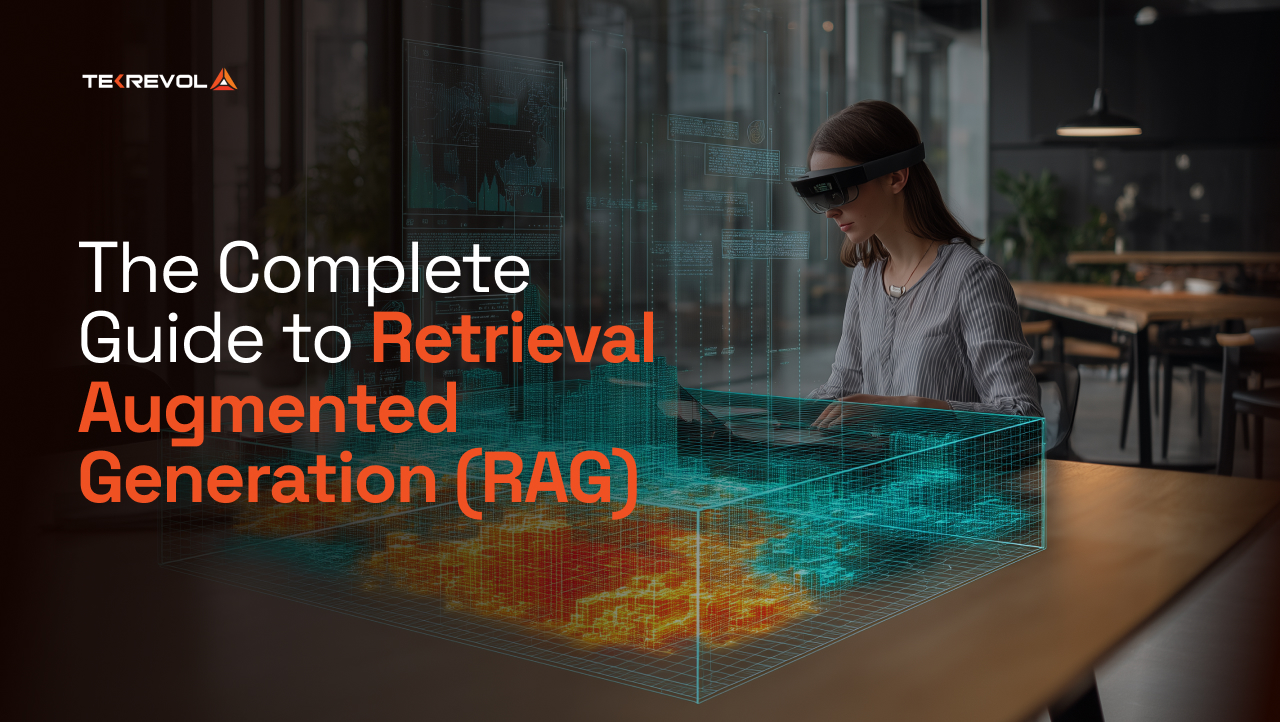At some point in life, each one of us has always wished for having someone around who can do tasks for us – too sleepy? And he turns off the lights for you, too hungry? And he cooks for you, sounds like a dream, right?
That’s what an AI app has been doing for us, and now in more, more, and more efficient ways.
Artificial Intelligence is transforming the world around us. From the moment you get a new recommendation of the next product to chatbots that answer your queries instantly, AI is in charge in such ways that we don’t even notice. It is no longer a futuristic concept; it has already become a part of our lives.
You might be thinking, ”How does AI work step-by-step?” Let’s make it simple for you. Building an AI software is like teaching a new skill to a student. You provide him with examples and let him practice every day to recognize the pattern.
As for an AI app, this process is a bit similar; however, it’s not magic. It is a carefully designed process that involves algorithms and smart software design. Software engineers fine-tune these models to improve the level of accuracy and performance.
By now, you must be curious to know what exciting surprises AI has in store for you. You’re at the right place. Let’s unpack what an AI app is and how it’s getting fruitful for you day by day.
What is Artificial Intelligence?
Artificial Intelligence is simply the idea of training machines to think and act like humans. It learns from different examples and even makes decisions.
Building a machine that understands humans and talks to them easily did not just happen overnight. It happened with a mere thought of Alan Turing in 1950, that what if there is a machine with the power to hold a conversation so well that we fail to recognize it apart from a human? This is where the first seed of an AI software was planted.
After a decade, Arthur Samuel and Joseph Weizenbaum took things into their own hands and introduced Natural Language Processing (NLP) to the world.
Since then, AI apps have been facing ups and downs in the process of upgrades, but every step has brought us closer to simplifying our tasks. And now in 2025, it is working behind the industries and tools we use every day.
Here’s a quick view of how AI has upgraded over the decades:
| Year | Milestone | Why It Matters |
| 1950 | Alan Turing proposed the “Turing Test”. | The first idea of machines acting like humans. |
| 1956 | The term Artificial Intelligence was introduced by Allen Newell, Herbert Simon, and J.C. Shaw. | AI officially became a field of study. |
| 1957 | Frank Rosenblatt created the Perceptron. | Early attempt at pattern recognition. |
| 1965 | Joseph Weizenbaum introduced the first chatbot, ELIZA. | The machine used a limited Natural Language. |
| 1968–77 | AI entered pop culture. | HAL in 2001, R2-D2 and C-3PO in Star Wars. |
| 1980s | Japan launched a $1 billion Fifth Generation project: AI Winters | Ambitions grow, but challenges stall progress. |
| 1997 | IBM’s Deep Blue beats chess champion Garry Kasparov | AI proved that it can outthink humans in complex games. |
| 2011 | IBM Watson wins Jeopardy | Natural language processing makes AI more human-like. |
| 2010s+ | Siri, Alexa, and Google Assistant arrive | AI assistants enter our homes. |
| 2025 | AI is powering industries everywhere | From healthcare to finance, AI is a daily necessity. |
It is pretty amazing to see how we were first introduced to an idea in 1950, and in 2025, we are already interacting with AI apps every day. A number of people now ask how does AI work step-by-step. The exciting part is that we are just getting started, experimenting with new techniques, and seeing how far it can go.
Step Into the Future Powered by AI
Let RevAI create solutions for you that think and deliver results smoothly, helping you build smarter with advanced technology.
Build Smarter with RevAI.Types of AI
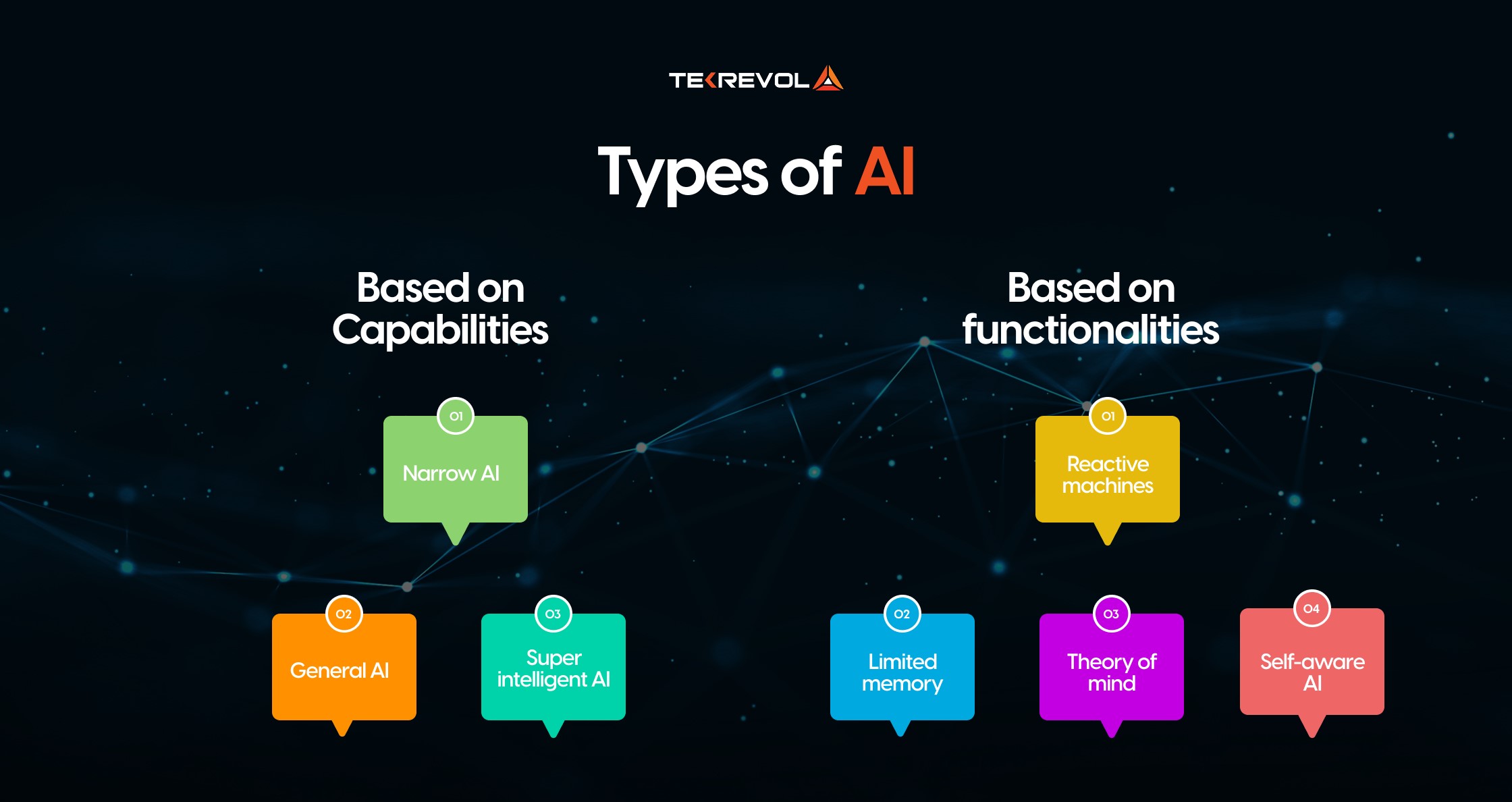
Not every AI app performs the same. Some of them are designed to do one task really well, like making recommendations, while others mimic human intelligence in bigger ways. AI apps come in different categories, and the way we classify them helps us determine their capabilities and intelligence.
For example, there are multiple students in one classroom. One student might be a math genius but lack in other subjects. Another might be a nerd and ambitious to learn new things as well. And then there’s a student with a higher IQ who even outsmarts the teacher.
To make it sound sane, this is how AI apps are also classified. They are generally divided into two categories: one that focuses on capabilities and the other that looks at functionality.
Based on Capabilities
When we classify AI “based on capabilities”, we are talking about how smart AI apps can be. In other words, we are comparing it to the intelligence level of human beings. A few of them are designed to handle a specific job, while others are expected to work like us or even beyond. Let’s unfold what each type brings to the table:
- Narrow AI (Weak AI)
This AI app is trained to perform one task really well. We are surrounded by narrow AI every day, like you can ask Siri to call someone from your contact list. Smart, right? Yes, it is, but ask yourself if Siri can make diagnoses or play chess with you? We don’t think so.
- General AI (Strong AI)
General AI is like having a mate excelling across various streams. Imagine a single AI that can draft a poem for you and even help you with legal advice, all with a little bit of training. It’s like a dream come true for researchers; however, it does not exist yet, but we can expect to see it in the future.
- Superintelligent AI
This is the stage where things get super advanced. Superintelligent AI apps would surpass human intelligence in everything. It is not theoretical yet, but if it ever turns out to be true, you can see it solving complex problems like making accurate diagnoses and even solving climate change.
Based on Functionality
While “capabilities” describe how smart AI apps can get, functionality focuses on how AI apps actually work. Think of it as the way AI systems behave when they’re solving problems. Some only react to situations, while others learn from memory, or in theory, could even understand emotions like humans. Here’s how it breaks down:
- Reactive Machines
These are the simplest kind of AI apps. They don’t remember the past or predict the future; they just react to what’s in front of them. A classic example is IBM’s Deep Blue, the chess-playing computer that beat world champion Garry Kasparov in 1997. It didn’t “learn” over time; it just calculated the best moves in the moment.
- Limited Memory
Now, this is where most modern AI app sits. These systems can look at past data and use it to make better decisions in the future. Think of self-driving cars, they learn from traffic patterns, road signs, and even your driving style to keep improving. Most AI assistants like Siri and Alexa also fall here.
- Theory of Mind
This type of AI app is still in the research phase. The idea is to build machines that understand emotions, beliefs, and social interactions. Imagine an AI therapist that not only listens to your words but also understands your feelings and responds with empathy. That’s the theory of mind AI.
- Self-Aware AI
This is the sci-fi level. A machine that’s conscious of itself, its actions, and maybe even its existence. It’s still just theory (and maybe a little scary to think about). But if developed, a self-aware AI app could push the boundaries of creativity, decision-making, and even morality.
How Does AI Work Step-by-Step?
AI systems work by processing large amounts of data with the help of smart algorithms to spot patterns and make decisions in a way that reflects human intelligence.
It may sound a little bit futuristic, but the process behind it is carefully planned and structured by the experts. After the process, multiple tests are performed to check if the AI is performing accurately or not. If it does, then it gets deployed on different platforms and even in business systems.
Moving on, we will now uncover every stage to show you how does AI work step-by-step.
Data Collection and Preprocessing
AI systems begin by collecting a huge amount of data from multiple resources and processing it further by cleaning it to remove errors.
Labeling also matters here; if the labels are messy, the learning process of AI will be moved in the wrong direction. According to Forbes, 85% of AI apps fail due to irrelevant and poor data quality.
Model Selection and Training
The real work begins in this part. This is where AI development goes from raw data to actual intelligence. Here, you have to select a preferred model, like for speed and clarity, you should go with linear models, tree-based models for structured data, and neural networks for all the advancements.
Once you are done with selecting the models, it is time to train your AI. Run through datasets and check the outcome by comparing predictions and reality, spot errors, and fix the parameters.
Evaluation and Optimization
Before an AI app development is finalized, it goes through a tough exam. The data is split, a hidden test set is held back, and results are scored with the right metrics.
Accuracy might sound good, but it often hides problems, so measures like precision and ROC-AUC are used to dig deeper. If the model shows bias or struggles with new data, it’s optimized by adjusting thresholds or corrected with regularization.
Deployment and Maintenance
This is the stage where an AI app becomes ready to act in the real world. It is then applied to power tools like voice assistants, self-driving cars, or even helping in the field of healthcare. However, this launch does not mean that things end here.
Engineers are always at the back to keep close checks on the performance and make adjustments as per the new data.
This is the ongoing reality of how does AI software work step-by-step, going through tough training sessions to deployment so that the system keeps providing useful information.
Essential Tools and Technologies in AI Development
An AI app runs on different tools and tech stacks. From programming to deployment pipelines, you will find yourself looking at a number of technologies used in the AI app development that help it learn, predict, and deliver results.
- Programming Languages and Frameworks: Powerful libraries of Python combined with frameworks like TensorFlow and PyTorch make adaptation efficient. Other tech stack, like Java and R, have their roles depending on the project. The use of the right combination defines how an AI app is coded and trained successfully.
- Cloud Platforms and APIs: Cloud services provide AI apps with the desired power and flexibility. AWS and Google Cloud give a scalable infrastructure, while APIs like OpenAI make it simple to include smart features.
- MLOps Tools for Model Management: Half of your battle is done once your model is developed. Different tools like MLflow and Airflow keep your AI app on track, working smoothly after deployment.
Keeping the right tools and technology for your AI development makes a huge difference. A proper tech stack keeps your model accurate and reliable; in short, a strong foundation is equal to a smarter AI.
In 2025, 78% of Businesses Are Using AI in Their Workflow
Let us leverage AI for you to boost customer satisfaction and increase ROI, staying ahead in the digital transformation.
Claim Your Free Consultation Today.How to Build an AI App?
AI app development always begins with knowing what you want to achieve. Even the smartest algorithms will fail to help you if your goals are unclear.
Since you are planning to create a system that learn and provides value to the users, you have to sort out your vision and consider how AI will process information, interact with humans, and improve over time.
With that being said, the path of AI development is a series of connected steps that build the foundation for a powerful application.

Identifying the Problem and Defining Objectives
Before beginning with writing a single line of code, it is important to identify the problem and know your objectives. Determine what type of task you want your AI app to work with, what type of question it should answer, or automate tasks.
In this way, it becomes easy to choose the right model and analyse the accuracy rate.
Designing the Architecture and User Interface
Once you have set your goals, it’s time to build the framework and the face for your AI app. The architecture will tell you how data flows and how quickly your app answers.
Meanwhile, the user interface will tell you how the users are going to interact, so keep it simple and clear. A smooth design helps your AI work properly and makes interaction effortless.
Integrating AI Models and Testing
This is the point where your application meets AI models, where all the planning and training meet reality. The AI needs to connect properly with your app’s API’s and databases so that everything works properly without causing any problems.
Next comes the testing. Here, you provide your AI app with different data to check how it responds. This helps in identifying any errors and making sure that it responds the way you expect it to.
Deployment and Post-Launch Support
Once your AI App development is done and ticks all the boxes, it’s time for a big launch. But the work does not end there at deployment; you will have to track its performance, fix any glitches that show up, and introduce new updates to improve its functionality.
Post-launch support keeps the AI app relevant and makes sure that it is learning new trends with accuracy over time.
AI Apps Across Different Industries
Running a business involves handling tons of data and performing the same tasks over and over again. Trying to manage all the tasks slows the progress and results in exhaustion. Since employees often feel burnt out while juggling multiple files and piles of datasheets, everyone is looking for an alternative to ease things up. That’s where the AI app steps in.
A report shows that 90% of businesses are either leveraging or learning about AI to include it in their workflow. With the said percentage, people seem to know how AI development works across various industries and ease things up.
Simply put, when you put an AI tool in a business, it handles all of the same tasks, juggling through complex data, and even identifying any errors that can potentially harm your business.
Let’s see how AI apps are helping in various industries and making the work process easy for everyone:
AI Apps in Healthcare
Healthcare is known as one of the most challenging fields. Clinics deal with an overwhelming amount of data every day, like records, lab tests, scans, medical screening, and whatnot. AI apps have reduced this burden and provided doctors with some sort of relief by handling the image scans, flagging potential health risks, and even prescribing proper treatment.
According to PwC, the AI healthcare market is expected to cross $868 billion in 5 years. This shows the massive impact of smart systems on both cost and care.
AI Apps in E-Commerce
Shopping online is no longer about scrolling endlessly through a list of products to find what you need. AI apps have transformed that scenario by deeply learning about customers’ approach and turning it into personalized recommendations. It also helps with smarter inventory management by notifying if a store is overstocking or running out of products.
And one more thing, you no longer have to wait for the customer support to help you with a specific issue; chatbots and virtual assistants have taken over that part as well to provide you with complete support and solve your problem instantly.
AI Apps in Finance
Finance runs on trust and accuracy, and the great part is that AI helps in both. Banks and financial institutions use AI to go through huge transactions and prevent fraudulent activities. It is also changing the way we invest. On a bigger scale, trading firms are using AI to analyse markets in real time and make instant decisions.
The value delivered by an AI app is huge since it could contribute $15.7 trillion to the global economy by 2030, and a solid chunk of that number comes from the financial sector.
Challenges and Ethical Considerations in AI Software
AI may feel a little bit magical, but understanding how AI software works is not enough; you also need to consider the challenges and risks that come with it. In 2025, companies are adopting smarter systems, but the real challenge is to make sure your AI app is working in a safe and trustworthy way or not.
You might be thinking these challenges are just some technical bugs or minor errors; however, there is another side to the picture. Those considerations are ethical decisions that decide how much people can rely on AI apps in their daily lives.
- Data Privacy and Security: AI systems work with a large amount of personal data, but the real question lies in how an AI app works with sensitive information without breaching privacy. This is where laws compliance like GDPR and strong security measures become non-negotiable.
- Bias and Fairness in AI Models: Sometimes, training data carries many hidden biases, and when the input is biased, expect the output to be biased too. Checking fairness means that it is essential to monitor data and models at every stage.
- Transparency and Accountability: AI apps often feel like a black box, without giving insights into how decisions are being made and how data is being processed. It becomes difficult to build real trust among users without proper transparency and accountability.
TekRevol’s RevAI: A Partnership Between Human Creativity and AI Apps
AI app development has come a long way from a futuristic concept to a practical tool that has transformed the way we work and interact with technology. We have witnessed AI apps taking over the repetitive tasks of businesses to provide intelligence support across various industries while learning and adapting every step of the way.
We have explored different types of AI and how does AI software work step-by-step, as well as the ethical considerations that make it trustworthy to rely on.
With that being said, RevAI takes a step further by combining human creativity and the precision of AI tools. Rather than leaving everything to automated systems, our skilled developers are here to guide you through every stage of development and deployment, ensuring smarter and reliable end results.
It’s time for you to partner with us to experience our new methodology that not only uses the power of an AI app but also combines it with human intelligence to deliver you solutions that evolve your business and needs.
Create a Responsible AI That You Can Trust
RevAI combines human expertise with AI to deliver fair, secure, and reliable systems that you can count on.
Let’s Create a Plan Today!
